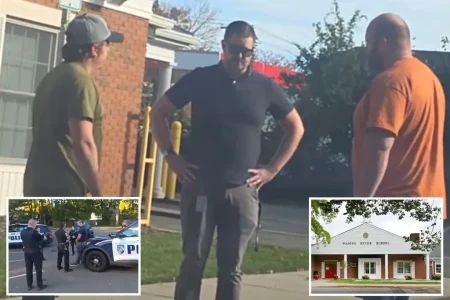The Troubling Case of Timothy Bohler: A Life of Crime and System Failures
Timothy Bohler’s story represents one of the most troubling examples of how the criminal justice system can repeatedly fail to protect society from individuals who demonstrate a persistent pattern of violent behavior. At just 31 years old, Bohler has amassed an astonishing 45 arrests, with his criminal activity beginning when he was merely 16 years old. His lengthy rap sheet tells a disturbing tale of escalating violence and a revolving door of arrests, brief incarcerations, and releases that have ultimately led to tragedy for innocent victims. What makes his case particularly alarming is how, despite clear warning signs and numerous opportunities for intervention, Bohler has repeatedly slipped through the cracks of a system that seems increasingly unable to address cases like his.
The most recent chapters in Bohler’s criminal history involve truly shocking violence. While already incarcerated at Rikers Island for allegedly attacking an MTA worker with a machete—slicing off four of Tayquon Young’s fingers during a dispute over their dogs—Bohler was charged with a hit-and-run that killed Lelawattie Narine, a cancer survivor. Narine had just completed chemotherapy and was declared cancer-free when she went for a doctor-recommended walk in Queens on March 22, 2024. According to prosecutors, Bohler struck her with a motorcycle at the intersection of 114th Street and Liberty Avenue, then fled the scene rather than calling for help or rendering aid. Narine died at Jamaica Hospital less than three weeks later. Her son, Darshan Narine, expressed relief at Bohler’s arrest but also voiced the question that haunts this entire case: “How does he keep getting out of jail?”
The answer to that question lies partly in the complex web of legal reforms and system failures that have characterized New York’s criminal justice landscape in recent years. Bohler’s path to state prison began with a chilling 2016 incident at a Bronx bodega where, after being refused beer on credit, he assaulted a clerk and returned with a handgun that misfired when he pulled the trigger. Though initially charged with attempted murder, Bohler ultimately pleaded to lesser charges of assault and weapons possession, receiving a six-year sentence. He began serving this term in April 2018 at Ulster Correctional Facility but received a conditional release in December 2022, less than five years later. This early release would set the stage for the violence that followed, including the fatal hit-and-run that killed Narine and, later, the machete attack on Young that left him physically and emotionally devastated according to his mother, who said the attack “took a really hard toll” on her son, a father of two.
The timeline of Bohler’s crimes after his release from state prison illustrates a troubling pattern of escalation with inadequate intervention. After allegedly killing Narine in the March 2024 hit-and-run (though he wasn’t charged for this until October), he violated his release conditions and was briefly returned to prison in June 2024. Remarkably, he was released again after just one week because, as state corrections officials explained, his return was for a violation rather than a new conviction, and his conditional release date had expired. By July, he faced assault charges in an alleged domestic violence incident, but these charges were dismissed. Even more disturbing, in October 2024, Bohler was arrested after allegedly holding a woman against her will and sexually assaulting her in a Bronx apartment near Crotona Park. Though specific details of this case remain sealed, law enforcement sources indicated the severity of the allegations included threats and rape. Despite this arrest, Bohler somehow remained free, leading to the January machete attack that maimed Young.
What makes Bohler’s case particularly frustrating for law enforcement and victims alike is the apparent inability of the system to effectively address such persistent violent behavior. “There is no longer any mechanism in law to keep people like this in prison,” one law enforcement source lamented, pointing to bail reform measures that have resulted in “releasing violent people with zero supervision or any rehabilitation.” The sealing of many of Bohler’s cases—twenty of his forty-five arrests are now sealed—further complicates the picture, making it difficult for the public, and potentially even for judges and prosecutors handling his newer cases, to fully grasp the extent of his criminal history. This lack of transparency may have contributed to decisions that kept Bohler on the streets despite his demonstrated danger to the community.
The human toll of these system failures is measured in the suffering of victims like Lelawattie Narine and Tayquon Young. Narine had fought and overcome cancer, only to lose her life during a health-promoting walk prescribed by her doctor. Young, whose fingers were severed in a senseless attack over a dog dispute, lost not only parts of his body but also, according to his mother, his will to live. Their stories represent the real-world consequences of a criminal justice system that struggles to balance reform with public safety. As Bohler now faces charges for both the machete attack and Narine’s death while incarcerated at Rikers Island, the question remains whether justice will finally be served in a manner that prevents further harm to the community. Their cases serve as a stark reminder that behind the statistics and policy debates about criminal justice reform are real people whose lives have been forever altered by violence that perhaps could have been prevented through more effective intervention and supervision of individuals with patterns of escalating criminal behavior.










